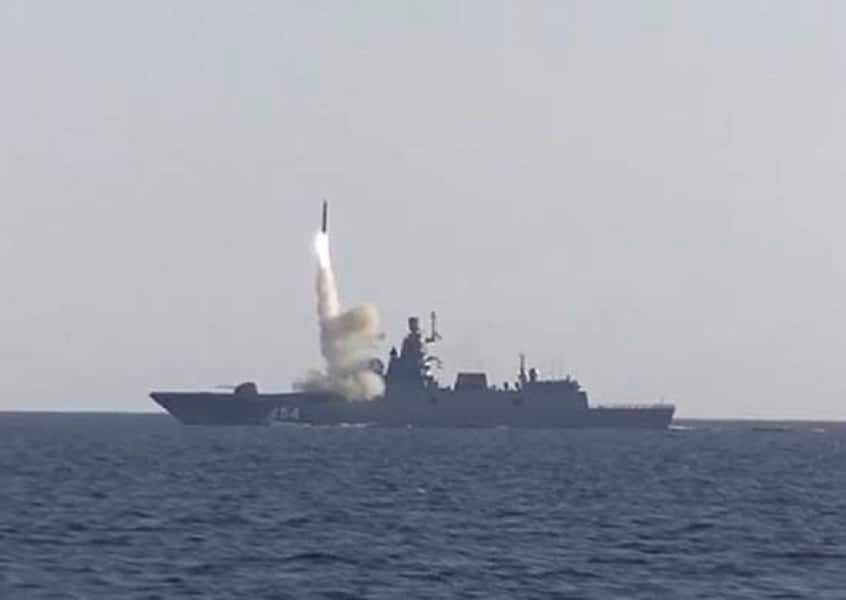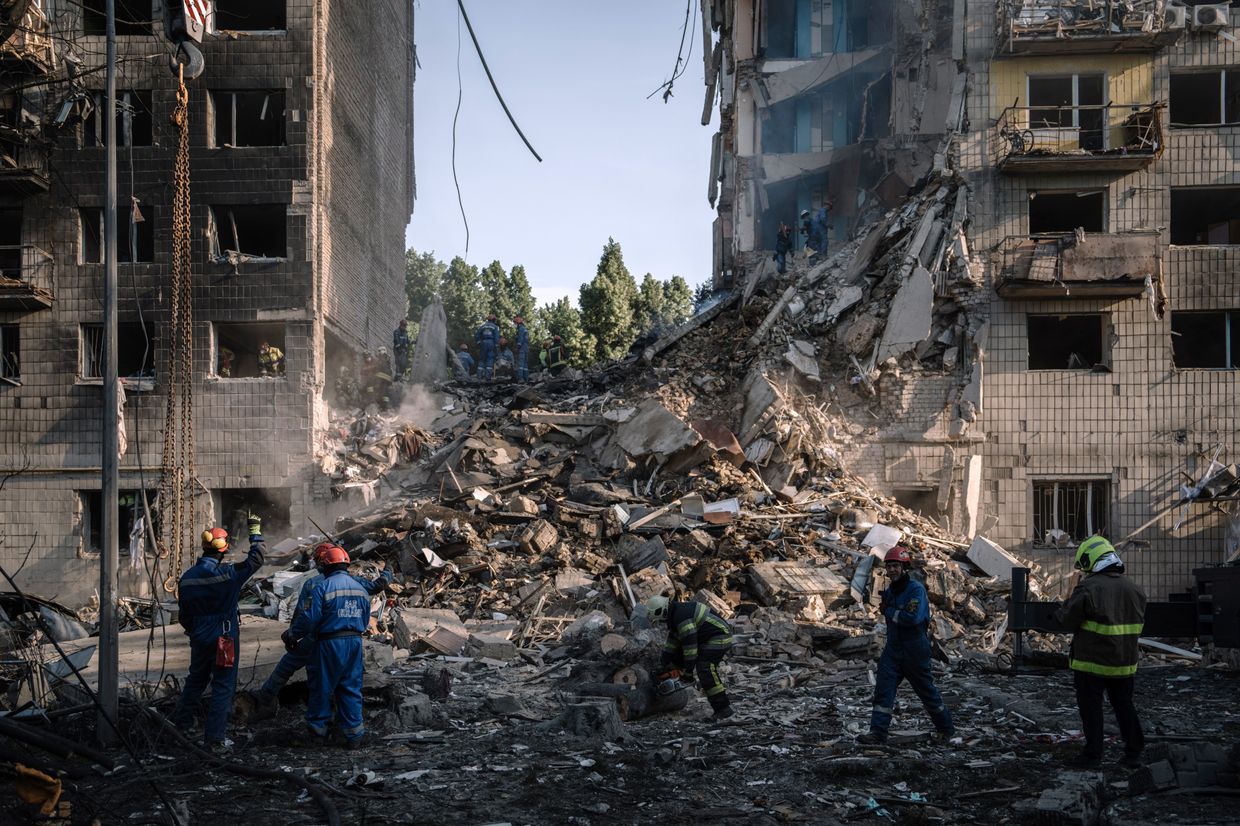Russia unleashed one of its deadliest attacks against Kyiv on July 8, killing 33 people and injuring 121 others.
Residential buildings and medical facilities suffered damage, with one Russian missile hitting Ohkmatdyt, the country's largest children's medical center.
Rather than evidence of some technological edge on Russia's side, experts linked the destruction wrought by the attack to Moscow's consistent probing for weaknesses in Ukrainian air defenses.
Attempts like this are almost certain to repeat, meaning that the West must help Ukraine shore up air defenses and allow Kyiv to destroy Russian airbases and planes with long-range weapons, defense analysts say.
Russia's attack on Ukraine on July 8
With the death toll of 33 as of the evening of July 9, the attack is on par with Russia's deadliest attack on Kyiv in December 2023.
In the wake of the attack, videos of a missile racing in the direction of the Okhmatdyt hospital were shared online. According to experts, the projectile in question was a Russian Kh-101 cruise missile.
Fragments of the Kh-101 missile were also uncovered by the Security Service of Ukraine (SBU) on the site, and a law enforcement source told the Kyiv Independent that the projectile hit its target in accordance with a programmed route.
All this evidence points to the conclusion that the attack was deliberate and that even Kyiv's powerful air defense, which includes a Patriot system, did not intercept the missile.
In fact, eight of the 38 missiles launched against Ukraine on the late morning of July 8 have not been downed by Ukrainian air defense.

Searching for weaknesses in defenses
While Kyiv is a common target of Russian missiles, it also boasts one of the strongest sky shields in the country, protecting the lives and property of the capital's residents.
Ukraine faced a critical ammunition shortage in spring over delays in American aid, but the U.S. Congress's approval of additional assistance in April unblocked the flow of military hardware, including air defense missiles.
Former Air Force spokesperson Yurii Ihnat presented a possible explanation to why Russia was able to penetrate Ukraine's defenses, saying that Russian ballistic and cruise missiles have become "more difficult to detect and destroy" as Russia continues to upgrade them with "heat traps and radars."
The projectiles also traveled at extremely low altitudes, with some of them shot down 50 meters above the ground, which could lead to "terrible consequences on the ground," Ihnat said.
Here is a summary of the details that I posted yesterday conclusively proving the missile in question is a Kh-101, not an AIM-120 or any other type of missile. From the rear section to the front part:
— Fabian Hoffmann (@FRHoffmann1) July 9, 2024
1) If you zoom in and look closely, you'll see atmospheric distortions… pic.twitter.com/xkVypbcXbW
Other experts believe, however, that it was the tactics rather than specific hardware that allowed the missile to evade interception. Ukrainian officials warned in June that Russia is testing new methods to attack the capital.
The suspected Kh-101 missile caught on video was traveling from a high altitude as it "dived" toward its target, Fabian Hoffmann, defense expert and doctoral research fellow at the University of Oslo, told the Kyiv Independent.
"That is quite different from typical low-altitude approaches and may have something to do with penetrating into Ukraine's weapons engagement zone (WEZ)."
Hoffmann suggested that the "Russians found a way that was not or not sufficiently covered by Ukrainian radars, allowing the cruise missiles to slip through."
The expert disputed Ihnat's comments about heat traps, noting that modern infrared homing missiles that Ukraine operates, like IRIS-T projectiles or AIM-120s, "are more than capable of differentiating the missile body from flares."
Better radar terminal guidance–which the Kh-101 do not possess–would improve the missile's ability to engage specific target, but not help it evadce air defenses, Hoffmann added.
Sidharth Kaushal, a senior research fellow at Royal United Service Institute (RUSI), told the Kyiv Independent that even if systems with infrared homing systems like IRIS-T were fooled by the heat traps, such deception would not be very effective against Patriot's Ka-band radar seeker.
Ukraine—and, therefore, likely the capital's air defenses—operates a wide array of Western anti-air weaponry, with Patriots representing the most effective and valuable component. Other systems, such as Gepards, HAWKS, NASAMS, or IRIS-T, may be used to intercept less difficult targets, leaving the most dangerous projectiles to Patriots or SAMP/T.
As Hoffmann notes, a Patriot would likely not be used to intercept a Kh-101 missile unless there were no other available means, and it would probably be able to down it in such a case.
As a testimony to the U.S. air defense system's prowess, the Air Force said that all the 20 Kinzhal missiles, one of the most advanced weapons in Russia's arsenal, that aimed at Kyiv had been downed since Ukraine received its first Patriot in May 2023.
Indeed, the Kinzhal missile launched on July 8 was reportedly intercepted. On the other hand, a hypersonic Zirkon missile appears to have evaded Ukrainian air defenses, even though the Air Force said previously that Patriots and SAMP/Ts should be able to intercept Russia's newest missiles.

It was the tactic of overwhelming Kyiv's air defenses with simultaneous strikes from different vectors that allowed some missiles to slip through, experts say.
"Russia conducted a combined attack, using various weapons that entered Kyiv from different directions, including from the west," defense expert Andrii Kharuk told the Kyiv Independent, adding that Russia sought to wear out Ukrainian defenses with Shahed drones a day earlier.
"The major challenges that Russian air attacks pose is the combination of multiple threats, including both cheap UAVs and expensive cruise and ballistic missiles," Kaushal said.
This is not anything new, and continued use of this method over time strains air defenses and allows some projectiles to evade interception "even if an air defense network is performing efficiently in any single engagement," he added.
Simultaneous attacks targeting multiple areas and pathfinding drones designed to find gaps in Ukrainian radar coverage and to unmask air defenses all play a key role, Kaushal concluded.
Shoring up Ukraine's sky shield
The attacks against Ukrainian cities are unlikely to relent, as Russia will try to further wear out the country's defenses, infrastructure, and population ahead of the winter.
This means that the country needs to continue shoring up its defenses and brace itself for further waves of Russian drones and missiles.
"Air defenses must be reinforced with modern equipment, but even this will never guarantee a 100% missile interception," Kharuk said.
"Therefore, the destruction of launching sites and missile carriers on Russian territory is extremely important," the expert said, stressing the need for long-range weapons.
Ukraine's capability of striking deep inside Russia is impeded by the U.S. ban on using long-range weaponry, such as ATACMS missiles, for this very purpose.
While the U.K. and France said they do not apply such restrictions on their supplies, there has not yet been a confirmed case of Ukraine using Storm Shadow or SCALP missiles to strike deep behind the Russian border.
Washington made it clear after the July 8 attack that it made no change to this policy, stressing that American weaponry can be used only to strike targets within Ukraine or just across the border.
On the other hand, there appears to be a growing momentum in reinforcing the Ukrainian air defense shield. Germany recently delivered a new Patriot to Ukraine, adding to at least three already in operation in the country.
More batteries are expected from Romania and the Netherlands, as well as a second SAMP/T from Italy. The White House also decided to prioritize Ukraine in air defense missile supplies.
Another useful boon can be the two ASC-890 Global Eye airborne surveillance and control aircraft pledged by Sweden, as they will improve Ukraine's "ability to track and classify low flying targets, since airborne systems are not limited by the earth's horizon," Kaushal said.
"More novel technical solutions such as mounting radar on aerostats" could also be considered, and low-cost air defenses, equipped with anti-air guns and radars, should be utilized to strike low value targets, the expert added.
"The technical challenge of pairing sensors with AAA fire is largely resolved, so the key will be gathering information that allows operators to classify targets early.
"This is partially about identifying patterns in Russian missile salvos and routes but also an area where the layering of additional sensors such as electro-optical/acoustic and thermal sensors can allow early target discrimination."
















